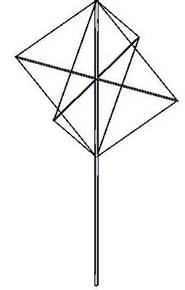I did talk to Homer on .385/LSB when he was running his loop the other day. Seemed to work quite nice and gave him that report. Had him the red here in CA - BTW - which isn't the typical signal report given him before from his using the V4. He did a comparison with his attic loop and hiss external loop; the external loop seemed to work better, as it was higher up than the attic loop.
Thanks for the report, Robb.
I had expected it to outdo the attic loop. Today, it seemed to be better at your QTH than the vertical S4, too.



